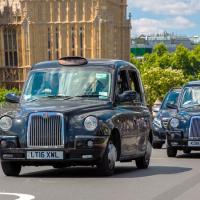
Yet more taxis!
Thanks to Steve Kallenborn for bringing the error in the original taxi problem to our attention.
In Issue No 2, we introduced "The taxi problem". Unfortunately, we didn't quite state it correctly the first time round:
A witness sees a crime involving a taxi in Carborough. The witness says that the taxi is blue. It is known from previous research that witnesses are correct 80% of the time when making such statements. The police also know that 85% of the taxis in Carborough are blue. What is the probability that a blue taxi was involved in the crime?
The problem with this problem is that we didn't spell out what we meant by a witness being wrong 80% of the time.
If there are only two colours of taxi in Carborough, blue and green, then it is clear that when faced with a blue taxi, 20% of witnesses say it's green and when faced with a green taxi, 20% of witnesses say it's blue. In this case, the probability that a blue taxi was involved in the crime is 96%, the result we calculated in Issue No. 2.
However, what happens if there are more than two colours of taxi in Carborough?
Problem
A witness sees a crime involving a taxi in Carborough. The witness says that the taxi is blue. Suppose that there are n taxi firms in Carborough (n > 1), each one using a different colour for its taxis.
It is known from previous research that witnesses correctly identify the colour of a taxi 80% of the time. In other words, faced with a blue taxi 20% of witnesses say it is some other colour, chosen at random from the remaining n - 1 possible choices.
If 85% of the taxis in Carborough are blue, what is the probability that a blue taxi was involved in the crime?